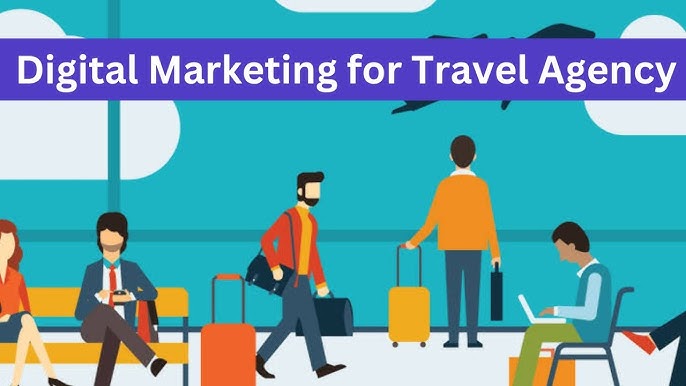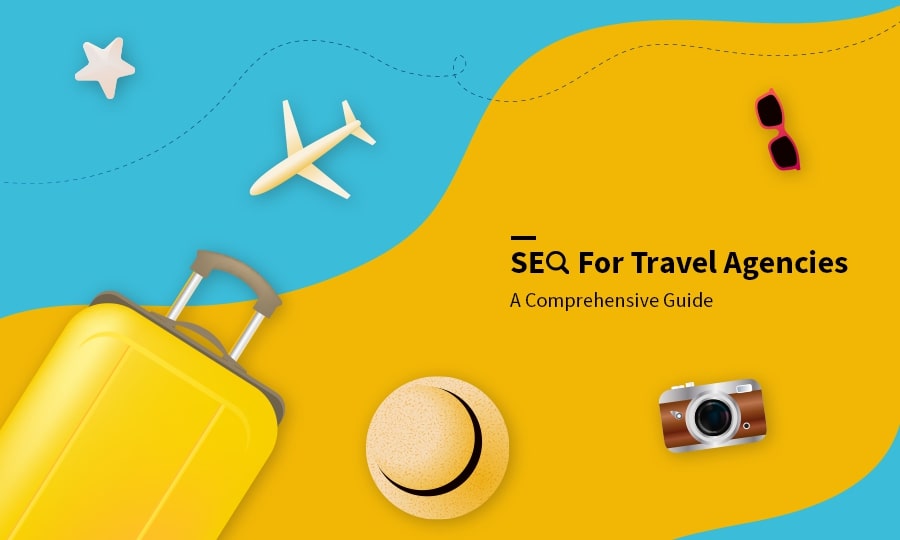
Travellers don't have to flip through glossy brochures or go to real travel agencies to plan their next trip anymore. Instead, they are using their smartphones, social media, and search engines. This digital shift has opened up new ways for travel companies to reach people all over the world. Discover how digital advertising for travel can change the game.
How Travel Marketing Has Changed Over Time
A digital-first approach has replaced the old travel marketing funnel, which included print ads, word-of-mouth, and TV spots. Travel brands can now send personalised messages to users in real time through platforms like Instagram, YouTube, Google Ads, and programmatic advertising. Digital advertising for travel is at the heart of this change. It's a strategic must for brands that want to stand out, get people to engage with them, and grow in a crowded market.
Why is Digital Advertising for Travel Important?
Digital advertising for travel works because it reaches people where they are: online. Advertisers can send people relevant and timely messages, whether they are looking at vacation packages, reading travel blogs, or watching destination vlogs. It's cost-effective, based on data, and can grow with your business—perfect for brands of all sizes.
Some benefits of digital advertising for travel are:
Targeting very precisely based on demographics, behaviour, and interests
Analytics in real time for instant feedback on performance
High return on investment (ROI) thanks to measurable conversions and less money wasted on ads
Brand storytelling through video ads, rich media, and content from influencers.
Understanding Your Audience
Before you start any campaign, you need to know who you're trying to reach. Digital advertising for travel is great because it can target specific groups of people, such as solo travellers, luxury seekers, eco-tourists, or digital nomads.
Data to Explore:
Best times of year to travel
Ranges of budgets
Famous places to go
Patterns of content engagement
With these insights, your brand can make ads that are relevant to travellers' needs and wants and have a real effect.
Best Places to Advertise Travel Online
Not every platform is the same. When using digital advertising for travel, picking the right channel is half the battle. Here is a list of the best platforms:
1. Ads on Google
Great for marketing based on intent. People who travel often look for things like "cheap flights to Tokyo" or "best hotels in Bali." Search and display ads let you catch these questions with great deals.
2. Facebook and Instagram
These platforms are great for telling stories through pictures and reaching specific audiences. Carousel ads, video reels, and lead forms are great ways to show off places and get customer information.
3. YouTube
This is the best way to market travel. Use YouTube to tell stories about your trips by showing previews of your destinations, travel guides, and endorsements from influencers. These visual formats are great for digital advertising for travel.
4. Program-Based Ads
Programmatic platforms can put your ads on thousands of websites using AI and real-time bidding. This makes sure you reach the right people at the right time.
Content That Changes
Well-targeted ads won't work if the content isn't interesting. When you write your message, remember these rules:
Use high-quality pictures and videos that make people feel something to inspire them.
Use persuasive writing: Headlines should grab the reader's attention. CTAs (Call to Action) need to be clear.
Tell a story: Stories from real travellers are great ways to build trust.
Deals and urgency are important: Limited-time offers or seasonal discounts make people want to click.
Digital advertising for travel is more interesting and effective when you combine creative excellence with data-driven strategies.
SEO and PPC work well together
Your paid ads can do better with a good SEO plan. If your blog does well for "best beaches in Thailand," you can show PPC ads for Thai vacation packages to people who read it again. This synergy increases your reach and strengthens the authority of your brand in the minds of potential customers.
SEO and PPC work best together for digital advertising for travel. They share information about keywords, audience behaviour, and other things.
Retargeting: The Secret Weapon
Not every traveler makes a reservation the first time they talk to you. That's when retargeting comes in. You can get people who visited your website but didn't buy anything to come back with cookies and pixels.
Here are some advantages of retargeting in digital advertising for travel:
Better remembering of the brand
Those people who have already bought
Offers that are tailored to travellers who aren't sure yet
A second or third look at your brand can make a big difference in the process of making a choice.
Strategies for budgeting and bidding
Digital advertising for travel lets you grow your business no matter how big it is, as long as you have the money. Smart bidding strategies can help you get the most out of your money, no matter how big or small your business is.
Main methods:
More control with manual CPC
Better CPC for smart automation
Target ROAS to get the most out of your ad spend
Geo-targeting to focus on important feeder markets
You can change your budget in the middle of a campaign to take advantage of what is working with real-time performance monitoring.
Success Stories from the Real World
Case Study 1: A Beautiful Resort in Bali
A small resort used digital ads to get people to come to their eco-friendly villas. They bought Google Display ads and Instagram reels that were aimed at people travelling to Australia. What happened? A 350% rise in reservations over three months.
Case Study 2: The National Board of Tourism
A European tourism board ran a programmatic ad campaign to promote cities that aren't as well-known. They saw a 200% increase in site traffic and a 60% increase in travel enquiries thanks to YouTube pre-rolls and partnerships with native content.
These examples show that digital advertising for travel can be very successful when done right.
Things to Avoid Making: Not paying attention to the mobile. People do most of their travel research on their phones. Make sure that your ads and landing pages work well on mobile devices.
Not personalised: Ads that aren't specific don't work. Make it personal based on how people act and what they like to do when they travel.
Don't skip A/B testing: Test different headlines, images, and formats to see which ones work best.
Not using analytics: You're flying blind if you don't keep track of things.
To get the most out of your digital advertising for travel, stay away from these mistakes.
The Future of Travel Ads
AI and other personalised technologies are changing the way digital advertising for travel will look in the future. Before they even click "Book Now," imagine potential travellers taking a virtual tour of a hotel room or hiking trail from all angles. Machine learning makes dynamic ads that can change in real time based on how users interact with them and what they like.
As technology gets better, brands have more chances to connect with people in real, meaningful ways.
Read Also: Digital Marketing
Conclusion
If you want your travel brand to grow, you need to use digital advertising for travel. You can use Google Ads, TikTok trends, and other tools to get your message to the right people at the right time. Digital ads help your brand stand out in a sea of options, whether you're advertising a cosy mountain cabin or a luxury cruise around the world.

 Start your Travel Business with Our 7 Day Free Trial Website!
Start your Travel Business with Our 7 Day Free Trial Website!





